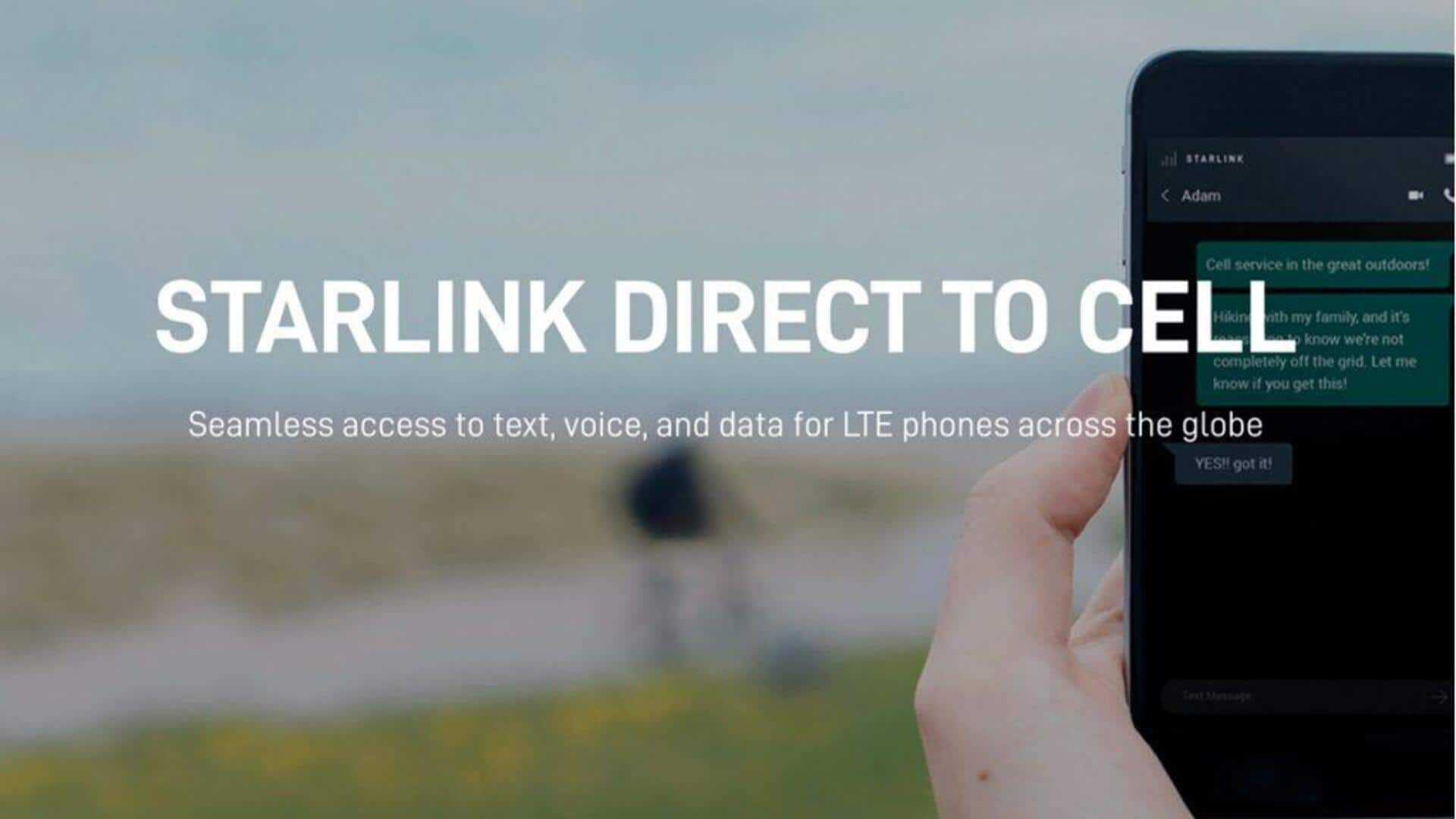
How Starlink's 'Direct-to-Cell' satellite connectivity service for smartphones works
What's the story
SpaceX has successfully launched 21 Starlink satellites aboard the Falcon 9 rocket today, including six with groundbreaking Direct-to-Cell technology. This innovation aims to offer global access to texting, calling, and browsing directly on smartphones, overcoming geographical barriers that often limit internet services. Using this tech, users can directly connect their devices to mobile networks of their choice, without requiring an intermediate ground-based infrastructure.
Details
Benefits and future of Starlink's Direct-to-Cell connectivity
Starlink's service enables users to stay connected on their handsets regardless of location, as long as their telecom provider has secured access. This is important for areas with limited or no reliable internet connectivity. Additionally, the system can be quickly deployed during emergencies when traditional infrastructure may be unavailable. To date, over 5,100 active satellites have been launched as part of Starlink's mission to establish a satellite internet network covering Earth, with more satellites being added with each subsequent launch.
Competition
How Direct-to-Cell fares against terrestrial networks?
On its official website, Starlink said, "This launch will include the first six Starlink satellites with Direct to Cell capabilities." "They will enable mobile network operators around the world to provide seamless global access to texting, calling, and browsing wherever you may be on land, lakes, or coastal waters." Direct-to-Cell is suitable for locations sans cellular connectivity. However, it is not competitive enough when it comes to existing terrestrial cellular networks.